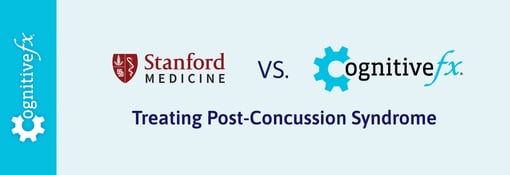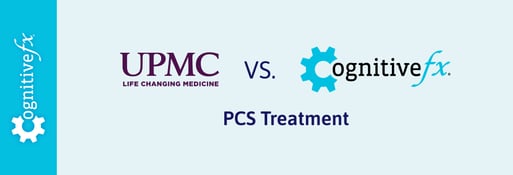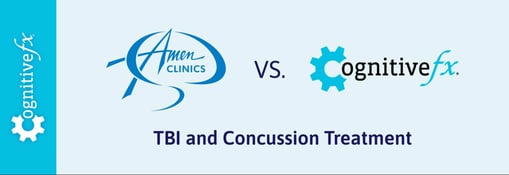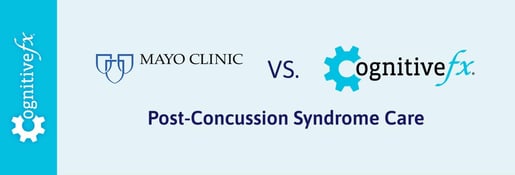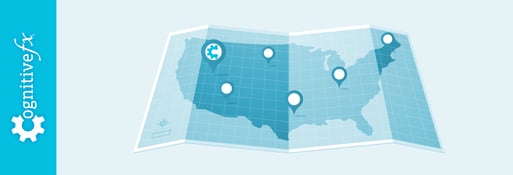UC San Diego Health offers various pathways for patients to be assessed and treated for concussions. Their main focus involves treating recently acquired sports-related head injuries, but patients with non-sports injuries can also be treated.
If you or a loved one are looking for concussion clinic options in California, it’s worthwhile to consider UC San Diego Health as your treatment provider. However, if you're experiencing persistent symptoms after your concussion lasting several months or more — a condition known as post-concussion syndrome (PCS) — UCSD will likely not be the best option for you.
As we'll explain below, treating post-concussion syndrome requires different resources and a different approach compared to treating recent concussions (known as acute concussions).
At Cognitive FX, we specialize in post-concussion syndrome treatment. Our patients receive multidisciplinary therapy from a large staff of diverse specialists, all of whom are trained in brain injury rehabilitation. We also offer functional brain imaging that identifies which specific areas of your brain were affected by the injury and in what way. This allows us to tailor your treatment plan to your brain in a way that very few clinics can.
In this article, we'll compare concussion treatment at UCSD and Cognitive FX to help you understand which clinic would better suit your needs.
We'll discuss how our clinics differ in terms of:
90% of our patients report reduced symptoms after their treatment at Cognitive FX. To see if you’re a good fit for our program, sign up for a consultation.
Staff Expertise

The Team at UC San Diego Health Specializes in Assessing and Treating Acute Sports-Related Concussions
Athletes arriving at UC San Diego Health with a concussion are directed toward their sports medicine department for diagnosis followed by neurological rehabilitation through their neurology and neurosurgery department. Treatment is available to athletes of all levels and ages, including high school, college, club, recreational, and professional/elite. Patients with a non-sports-related injury can also be assessed and treated at UC San Diego Health.
Their experienced team of specialists includes:
- Sports medicine physicians
- Physical medicine specialists
- Rehabilitation specialists
- Neurologists
- Neurotologists (these doctors diagnose and treat vertigo, balance disorders, and tinnitus)
- Neurosurgeons
- Psychologists
- Neuroradiologists (brain imaging specialists)
- Physical therapists
- Occupational therapists
- Speech and language therapists
At the moment, they don’t appear to have a dedicated department for treating patients with persistent post-concussion symptoms and there is no indication on their website that they have a specialty in this area.
The Team at Cognitive FX Specializes in Treating Patients With Post-concussion Syndrome
Cognitive FX’s main focus involves treating patients with persistent symptoms after a concussion. Symptoms may include recurrent headaches, dizziness, and cognitive problems lasting for months or years.
While there is overlap with UCSD in our medical specialties, our doctors and therapists are specially trained and highly experienced in treating brain injury complications and long-term symptoms. Our team includes the following specialists:
|
|
|
|
|
- Speech-language pathologists
|
- Clinical neuropsychologists
|
|
|
|
- Vision and vestibular specialists
|
|
|
|
|
|
- Licensed massage therapists
|
Our expertise is centered around treating the main causes of PCS symptoms, including:
One of the main factors causing lingering symptoms after a concussion is neurovascular coupling dysfunction.
In a healthy brain, brain cells can request oxygen and nutrients from surrounding blood vessels as they need it to complete a particular task. These resources are then delivered to the right place at the right time, in a dynamic connection called neurovascular coupling (NVC).
After a head trauma, however, some areas of the brain become out of sync with their surrounding blood vessels. They may not receive the right amount of nutrients at the right time (for example, too much, too little, too early, or too late). As a consequence, they struggle to perform their tasks. Other areas of the brain often try to compensate, which puts significant strain on the brain’s function and energy levels.
As a result, patients develop headaches, brain fog, and fatigue. Thanks to our advanced imaging capabilities (described in more detail below), our team can identify exactly what areas of the brain were affected by the concussion, which allows them to develop treatment plans specifically tailored to each patient’s brain function patterns.
Our staff can also identify symptoms caused by dysfunction of the autonomic nervous system (ANS). The ANS controls many body functions, including heart rate, blood pressure, and breathing rate. This is done through the sympathetic nervous system (SNS) and the parasympathetic nervous system (PNS). The SNS facilitates our “fight or flight” response in case of stress, while the PNS controls the “rest and digest” process to calm the body.
Under normal circumstances, SNS and PNS work together in harmony, but concussions disrupt this balance. In most patients, the SNS stays active even if it’s not needed, causing symptoms such as fatigue, headaches, high blood pressure, heart rate changes, body temperature changes, digestive issues, problems sleeping, mood changes, and more.
In addition, PCS patients can also suffer breathing problems. After a concussion, the body often “forgets” how to breathe properly. A healthy brain adjusts breathing rates based on what the body needs. Exercise, for example, triggers an increase in breathing rates because muscles need more oxygen.
Concussions often disrupt this communication between the brain and lungs. If the brain can’t react to the body’s changing needs, patients suffer from breathing disturbances, causing symptoms such as shortness of breath, dizziness, flushing, and fatigue. Rehabilitation is challenging, but our team can teach patients exercises to help retrain their breathing patterns.
Finally, we have a variety of therapists specialized in specific PCS impairments, such as vision, vestibular, and speech and language problems. These therapists are trained to use various exercises tailored to each patient to address their specific symptoms. Most of the time, our therapists combine exercises from multiple therapies to address different symptoms simultaneously. This level of coordination between therapists is essential for getting the best results for PCS patients, yet rare among concussion clinics.
Key Differences
UC San Diego Health
- UCSD’s team includes mainly sports-related healthcare providers, including sports and exercise physicians and athletic trainers.
- Their team’s focus is on treating athletes with recently sustained concussions.
- They don’t have a dedicated department for treating patients with persistent symptoms months or years after their head injury.
Cognitive FX
- Our team includes a wide range of medical specialties highly relevant to treating lingering symptoms of brain injury, such as neurosurgery, clinical neuropsychology, neuroscience, cognitive therapy, physical therapy, massage therapy, vestibular therapy, occupational therapy, and more.
- Our team is entirely focused on treating persistent, long-term symptoms of brain injury. Cognitive FX is where you would go when you ‘graduate’ UCSD’s acute concussion treatment program but your recovery is not complete and you still have limitations you’d like to overcome.
- Our team is well-versed in treating both sports-related and non-sports-related concussions.
Patient Evaluation
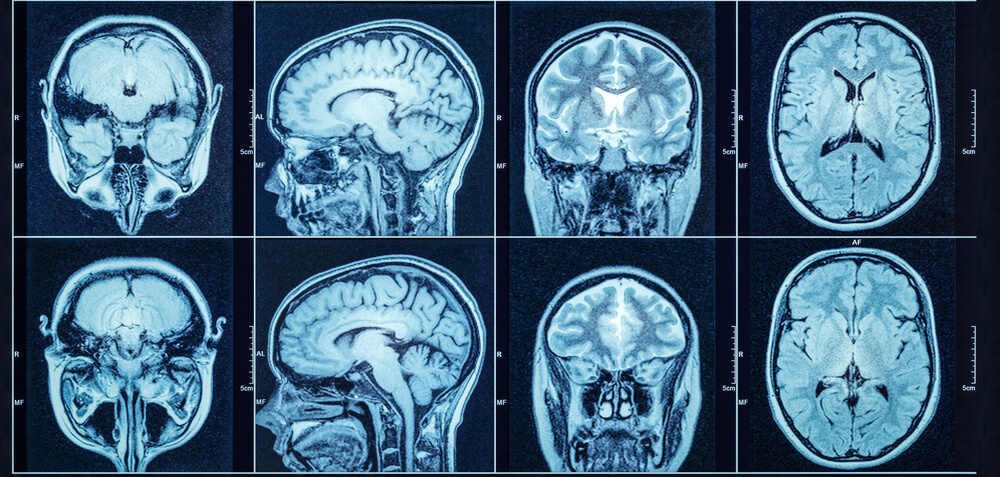
UC San Diego Health Offers Brain Imaging to See Where the Brain Has Been Affected (but the Technique Used Lacks the Ability to Identify Neurovascular Coupling Disruption)
At their initial visit, patients meet with a specialized doctor, such as a sports medicine specialist, to get a diagnosis and a treatment plan.
Typically, patient evaluation includes:
- ImPACT assessment: ImPACT (immediate post-concussion assessment and cognitive testing) is a computer-based concussion assessment tool. The test takes about 20 minutes and assesses various physical and cognitive skills, including verbal and visual memory, processing speed, and reaction time.
- Baseline Testing: The ImPACT assessment is also used to get baseline data. This test establishes the patient’s normal responses and it’s done before the season starts. If the patient suffers a concussion, the results after the injury are compared to the baseline to determine how the patient was affected.
- Cognitive and physical examination: UCSD doctors use a variety of tests to assess physical and cognitive function, including orientation, memory, concentration, balance, and vestibular status.
- Brain imaging: UCSD uses a brain imaging technique called magnetoencephalography (MEG). MEG measures very weak brain waves which indicate how the brain is functioning. (More on this below.)
Cognitive FX Offers Extensive Evaluation for Post-concussion Syndrome (Including Functional NeuroCognitive Imaging That Shows Exactly Where a Patient’s Brain Has Been Affected)
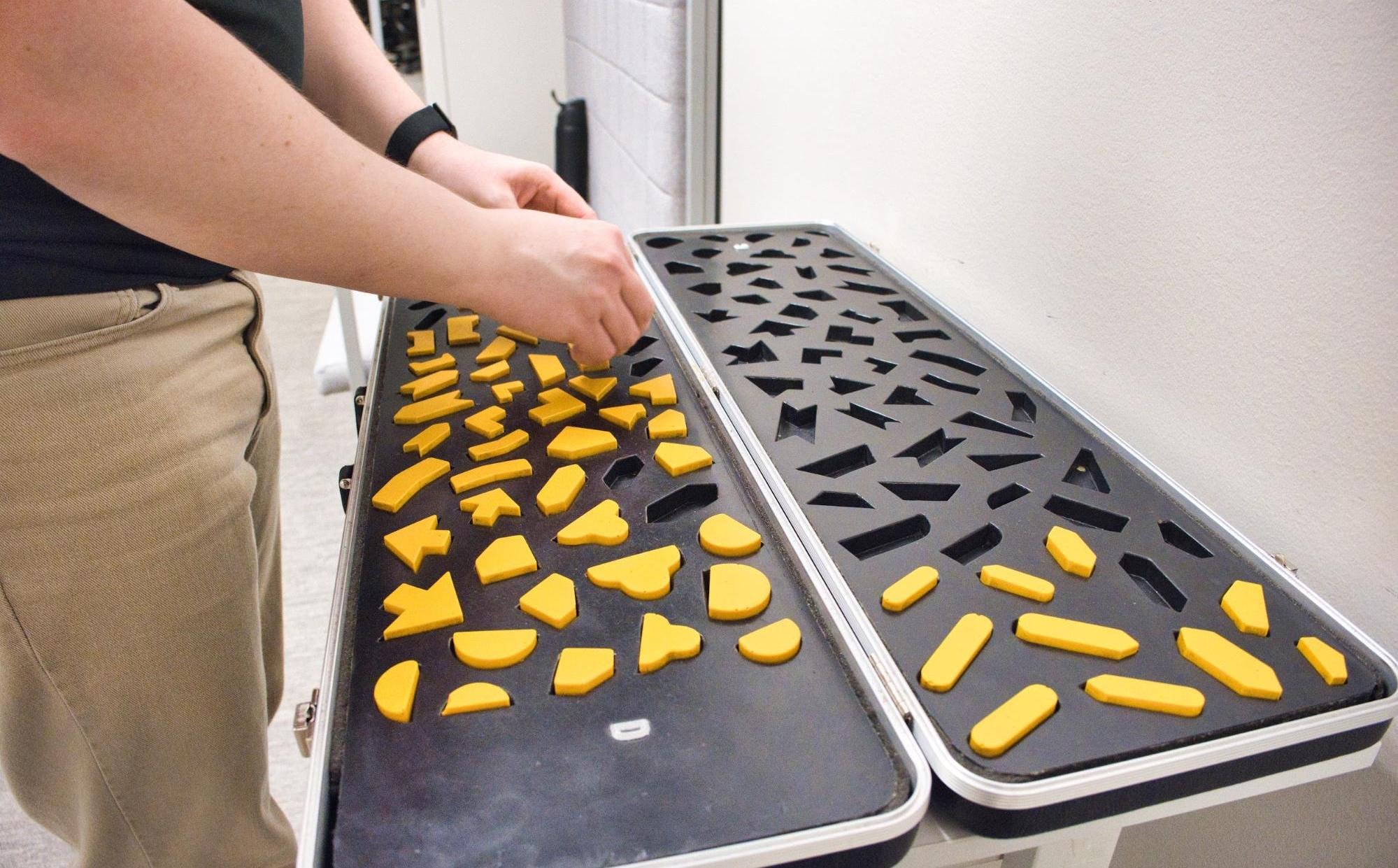 One of the timed exercises included in patient evaluations at Cognitive FX.
One of the timed exercises included in patient evaluations at Cognitive FX.
At Cognitive FX, all our patients receive the same comprehensive evaluation, independently of where it happened. Patients undergo a variety of exams, including:
- A review of the patient’s medical history and symptoms present.
- A physical exam to assess balance, hand-eye coordination, functional vision, reaction times, and other physical abilities. For example, patients have to perform a series of tests using digital eye-tracking software to help our therapists identify vision deficits, such as difficulty tracking or poor peripheral vision.
- A cognitive assessment to evaluate memory, focus, thinking, and other skills.
- A psychological evaluation to spot symptoms of mental health problems, such as anxiety and depression.
- A structural brain and cervical spine MRI to identify serious structural injuries that need medical treatment.
- A functional neurocognitive imaging scan precisely identifies the areas of the brain affected by the injury.
During the initial evaluation, our team also looks for signs of ANS dysfunction, and a neurointegration specialist evaluates how well the patient’s inner ear, eyes, and body communicate with each other. We repeat the same tests at the end of the treatment week to assess how much the patient has improved.
Once all assessments are complete, our team can design a personalized treatment plan to target exactly the areas of the brain that showed dysfunction.
MEG vs fNCI: How Do These Brain Imaging Techniques Compare?
Standard brain imaging scans, such as CT and MRI scans, can detect structural changes such as skull fractures or brain bleeding. However, they can’t reveal functional changes that result from brain injury and therefore have limited utility when it comes to treating concussions.
To cover this gap, researchers have been trying to develop more accurate ways to measure functional changes in the brain after a head injury. Two current methods include magnetoencephalography (MEG) and functional NeuroCognitive Imaging (fNCI), which follow two very different approaches.
How MEG Imaging Works
At UC San Diego Health, concussed patients are assessed by MEG. This non-invasive brain imaging technique uses a superconducting quantum interference device (SQUID) to measure neuromagnetic activity within the brain. MEG detects, records, and analyzes brain waves produced by electrical currents in the brain. The distribution of these waves is superimposed with an anatomical image of the brain to help identify the areas of activity in the brain. UC San Diego Health is one of only about 20 centers in the US to perform this type of brain imaging.
The procedure is conducted in a shielded room that blocks background electromagnetic radiation from radio waves and cellular towers. This also creates a quiet room for measuring the brain's weak magnetic fields. Patients sit or lie in the scanner with a helmet on their head while the scanner records the brain's magnetic waves. The procedure takes from five minutes to one hour depending on your test.
In theory, MEG can identify areas of the brain in concussed patients with abnormal increases in low-frequency neuronal activity. This information can then be used to develop a personalized treatment plan. At UCSD, MEG is used for:
- Diagnosing concussions and other traumatic brain injuries (TBIs)
- Determining whether a patient is suffering from TBI or post-traumatic stress disorder (PTSD), which are treated very differently
How fNCI Imaging Works
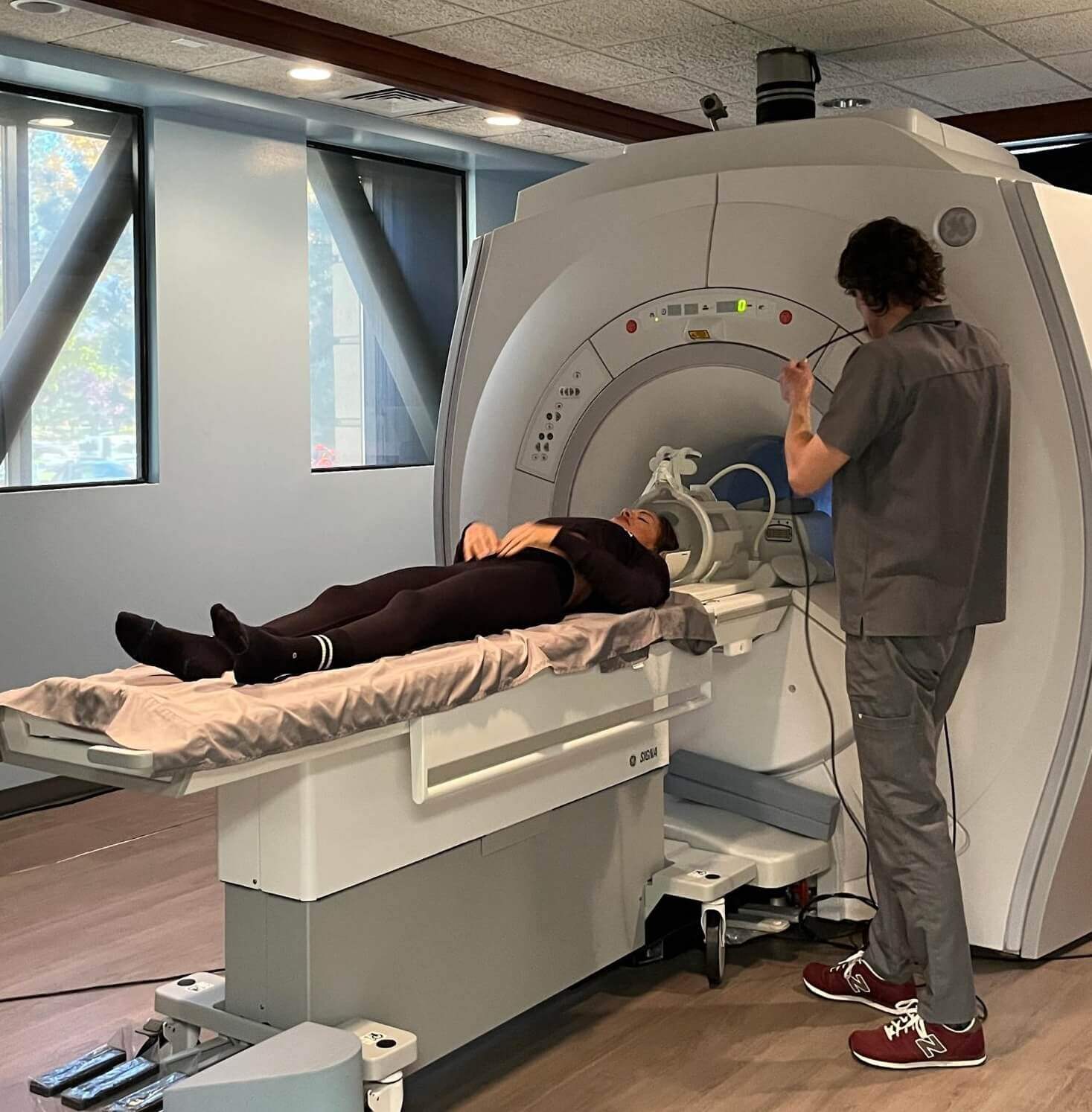
In contrast, patients at Cognitive FX undergo functional Neurocognitive Imaging (fNCI). This scan measures blood flow in 100 different regions in the brain while patients carry out a set of predetermined cognitive tasks. The resultant near-real-time images are then combined and compared to a healthy control database to identify areas where neurovascular coupling dysfunction disrupts normal functioning.
After the patient completes the fNCI, we analyze the images to see which areas of their brain are not working optimally. Key regions of the brain each receive a score that reflects how well they’re performing. Scores in the yellow to red sections indicate neurovascular coupling dysfunction in the areas of the brain responsible for that particular cognitive function.
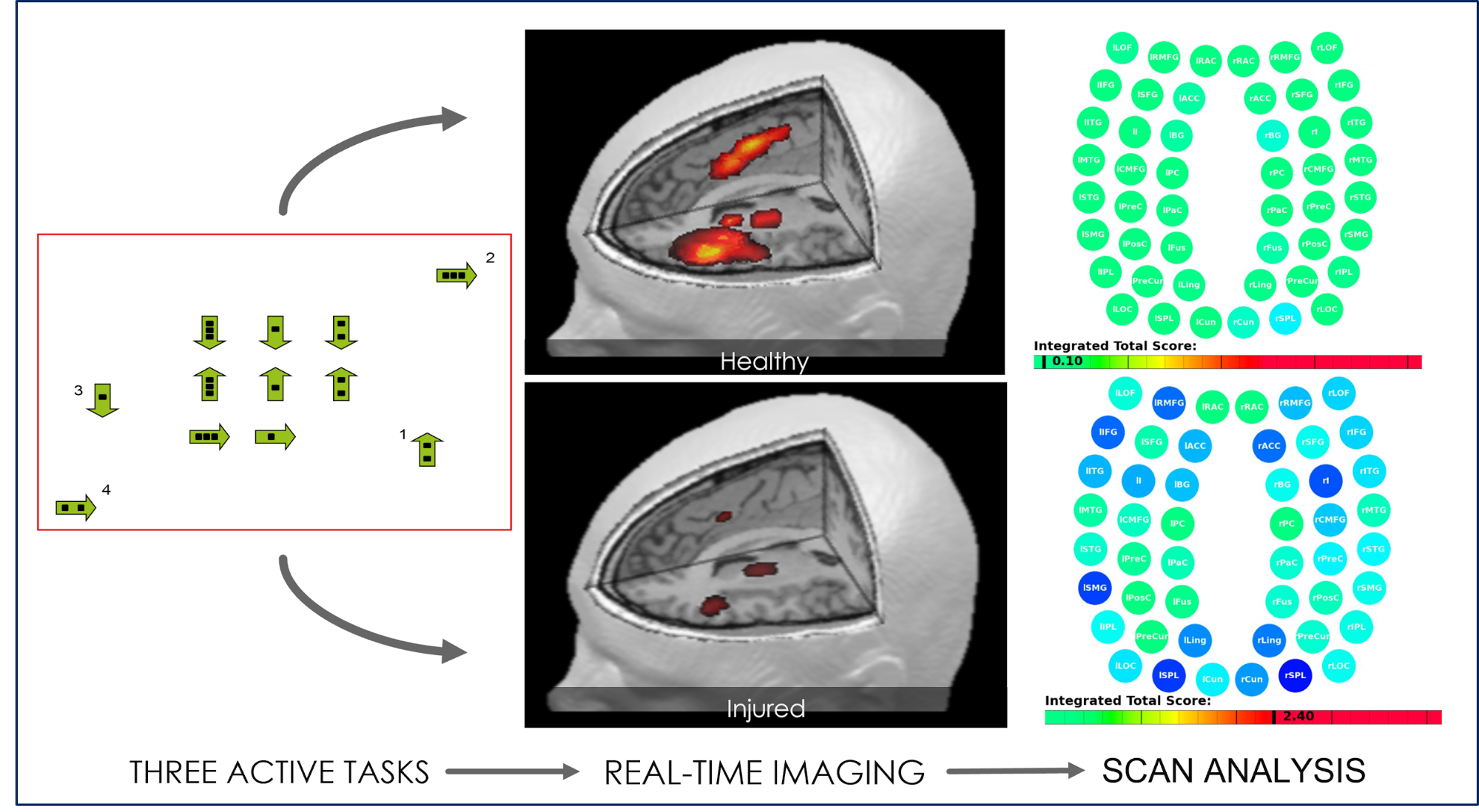
The scan also measures how different brain regions communicate with each other. In this case, regions in green are normal, whereas areas in blue are less active than expected. For example, in the image below, rACC (the right anterior cingulate cortex) shows less activity than usual. This area is crucial for attention and could contribute to memory problems if not functioning normally.
%20(3)-1.jpg?width=676&height=313&name=Yes%2c%20COVID%20Affects%20the%20Nervous%20System%20(%26%20What%20to%20Do%20About%20It)%20(3)-1.jpg)
Key Takeaways on MEG vs. fNCI Scans for Concussions
While MEG has shown promising results as a functional brain imaging tool, it’s still not a diagnostic or prognostic clinical tool in mTBI with sufficient sensitivity and specificity to diagnose patients. A significant technical problem is that pinpointing the exact location of the disrupted brain waves caused by the concussion is a complicated process and the analysis does not necessarily offer a single location (it may provide multiple possible locations).
In addition, MEG scans have other issues and limitations:
- MEG does not provide structural information. This means that MEG data needs to be combined with an image indicating brain anatomy to produce brain activity maps.
- MEG scans must be compared to a normative database of healthy people. The number of people in the database must be quite large as even normal measurements vary significantly from person to person.
- These exams must be conducted as soon as possible after the head injury. A few days later, as the patient is already recovering, it’s likely that MEG will produce results within the normal range.
In contrast, fNCI is a more established brain imaging technique that we’ve performed on hundreds of patients to identify the areas of the brain that were affected by their concussion. In our view, fNCI is the best option to identify neurovascular coupling disruption, the hallmark of persistent brain dysfunction caused by mild traumatic brain injuries (mTBIs).
If it was a reliable method, measuring brain waves (with MEG) would be a more direct way to assess brain function. After all, measuring blood flow is an indirect measurement of brain activity. However, fNCI is currently more reliable and accurate than MEG. In addition, fMRI has virtually no risks. It can assess brain function safely, non-invasively, and effectively. fMRI is easy to use, and the images it produces are very high resolution.
| |
MEG |
fNCI |
| What do they measure? |
Measures magnetic fields created by electrical activity in the brain |
Measures blood flow across different areas of the brain |
| How do they assess the impact of concussions? |
Identify abnormal brain waves in specific areas |
Detects disruptions in neurovascular coupling (disruptions in normal blood flow in the brain) |
| How are results analyzed? |
Results are compared to a normative database of healthy people |
Near-real-time images are compared to a database of healthy people |
| When to conduct the assessment? |
Short window of opportunity soon after the concussion |
Can be done at any time; can still detect the impact of concussion months or even years after the concussion for patients experiencing persistent symptoms |
| Overall conclusion |
- Promising results, but still needs further research
- Need large normative database
- Difficult to pinpoint exactly what area of the brain was affected by the concussion
|
- Established brain imaging technique
- Best option to measure neurovascular coupling disruption, the hallmark in PCS
- Can be used to identify exactly what areas were affected by the concussion
|
Key Differences
US San Diego Health
- Patient evaluation is geared towards assessing recently sustained, sports-related concussions. They also offer baseline testing for athletes.
- Patient evaluation mainly focuses on assessing physical symptoms, with less consideration towards cognitive and emotional issues.
- Functional brain imaging is done with a magnetoencephalography (MEG) imaging technique.
Cognitive FX
- Cognitive FX offers an extensive patient assessment covering the patient’s medical history, list of symptoms, and the results of physical, cognitive, and emotional evaluations. Our assessment goes deeper into assessing issues such as autonomic, vestibular, and vision dysfunction.
- All patients undergo an fNCI brain scan which measures blood flow in 100 brain regions. This brain imaging allows us to identify which areas of the brain were affected by the concussion and the results are used to provide a tailored treatment plan for each patient.
Treatments Offered
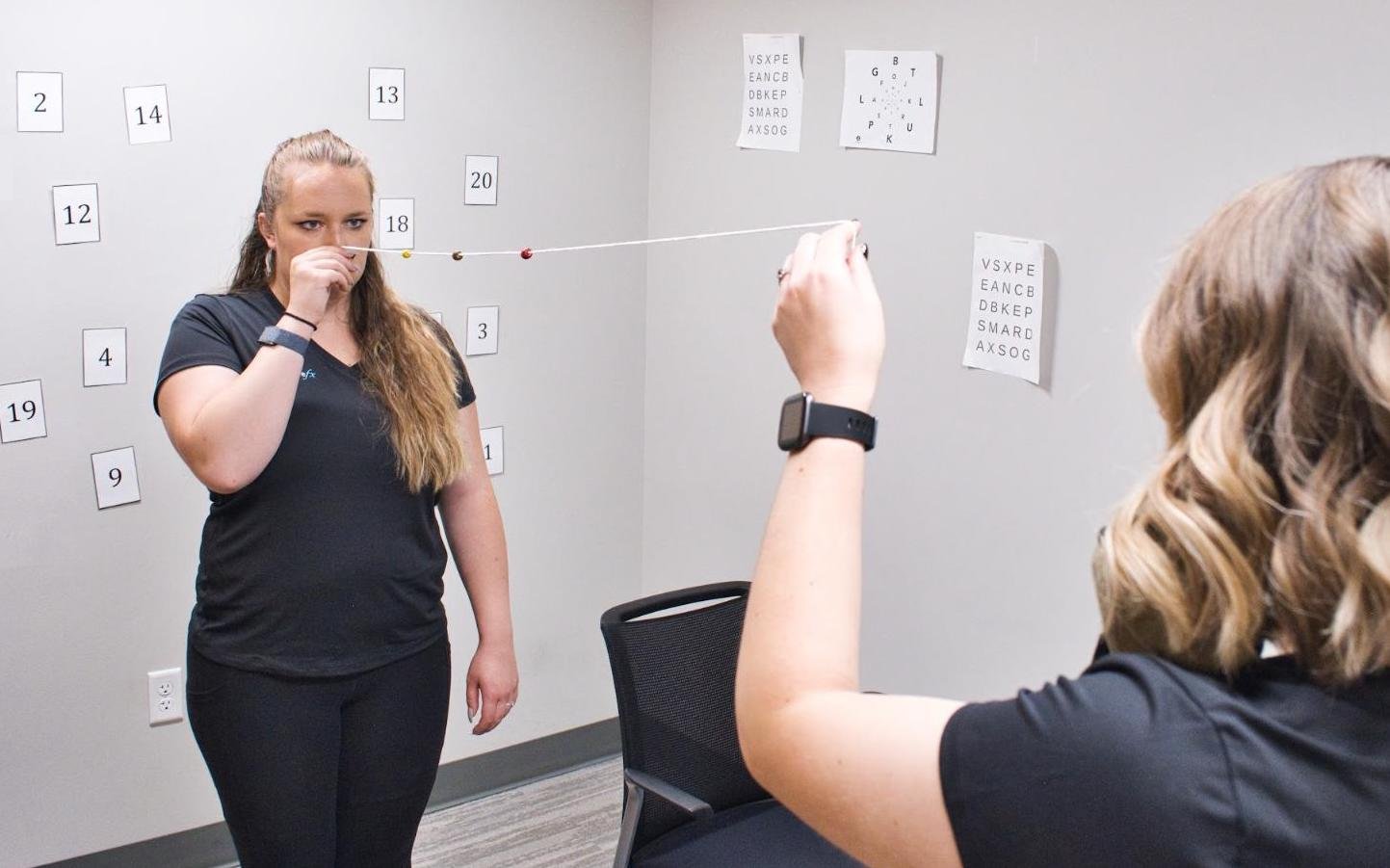
UC San Diego Offers Multiple Neurorehabilitation Services (but Lack Dedicated Treatment for Post-concussion Syndrome)
UC San Diego Health offers various levels of treatment for patients with a concussion, from immediate care in the ER to long-term rehabilitation services.
Emergency Trauma Care
UCSD provides emergency trauma care 24 hours a day. Patients who experience a head injury can access emergency departments in three locations in San Diego County (Hillcrest, La Jolla, and the college area).
Their highly specialized surgeons and other trained health professionals use advanced equipment to treat critical injuries resulting from head injuries, drowning, falls, fires, gunshot wounds, serious car crashes, violence, and other traumatic incidents.
Neurological Rehabilitation Services
Patients who need neurological rehabilitation after a concussion are typically treated with:
- Physical therapy: UCSD’s physical therapists can treat concussed patients using a variety of exercises designed to restore physical function and mobility. These therapists are trained to evaluate each patient’s condition and design a personalized treatment program to help restore their physical health after a head injury. This typically involves a heart-rate-based exercise program, where patients are closely monitored to ensure they stay within a certain target heart rate.
- Occupational Therapy: Occupational therapists can help patients maximize their independence with everyday activities such as self-care, homemaking, and work. In practical terms, these therapists use hands-on therapies, adaptive equipment, and directed therapeutic tasks to improve the patient’s quality of life.
- Speech and language therapy: Language and communication problems are common after a concussion. Speech therapists can treat various conditions, including aphasia (difficulties with language) and dysarthria (slurred or slow speech), which commonly affect concussed patients. All UC San Diego Health's speech therapists are licensed by the American Speech-Language-Hearing Association, a nationally recognized credential that meets the highest standards of excellence in the profession.
- Vestibular therapy: After a concussion, patients may experience vestibular dysfunction, causing dizziness, nausea, and imbalance, to name just a few. To address these problems, therapists at UCSD use different exercises to restore vestibular function and improve the patient’s balance and posture.
- Cognitive behavioral therapy (CBT): Therapists can help patients cope with the emotional and psychological tolls of traumatic brain injury, including depression, anxiety, insomnia, and headaches.
- Headache and pain management: Post-traumatic headaches and migraines are some of the most common symptoms after a concussion. Patients experiencing these symptoms are treated with various treatments, including medication, neuromodulation, acupuncture, nerve blocks, and trigger point injections.
- Nerve pain treatment: In addition to the concussion, patients who also suffered whiplash may experience nerve pain in the neck, spine, shoulders, and arms. UCSD’s neurologists offer a personalized care plan to relieve pain and restore function. This may include acupuncture, medication, physical rehabilitation, and neck injections.
- Acupuncture: Therapists use acupuncture as a way to reduce pain in patients dealing with concussion symptoms, including headaches and neck pain. This is not a treatment for concussion, but it can help relieve some symptoms.
- Osteopathic manual medicine: In concussed patients, UCSD osteopaths use physical manipulation, stretching, and massage to increase the mobility of cervical joints to relieve muscle tension and promote blood flow to the brain. The aim is to enhance mobility and facilitate recovery.
- Personalized return-to-learn and return-to-play: Gradually returning to activity is very important to recovery. Therapists at UCSD can accompany patients during their return to school, work, and sports.
- Neurobiofeedback: People who have had a concussion can have severely deviant brain wave patterns, which can cause symptoms such as brain fog, inattention, emotional regulation, and executive functioning. In theory, neurobiofeedback can be used to identify what dysregulated brain wave patterns are causing concussion symptoms and then design a personalized treatment plan to address these issues. However, studies show that it’s not possible to identify exactly what areas of the brain are generating specific brain waves. Nevertheless, although it may not work as a concussion treatment, it can be used in patients with anxiety and post-traumatic stress disorder (PTSD), which can develop after a concussion.
Cognitive FX Offers Multidisciplinary Treatment for Post-concussion Syndrome Tailored on Each Patient’s fNCI Results
Once patients complete their evaluation, they are ready to start treatment. Each patient receives a completely customized treatment plan. Our therapists use a combination of aerobic exercise and multidisciplinary therapies to target the root causes of PCS symptoms in patients, including neurovascular coupling disruption, autonomic dysfunction, vision changes, and vestibular issues.
Typically, treatment involves a three-step cycle that is repeated throughout treatment: Prepare, Activate, and Recover.
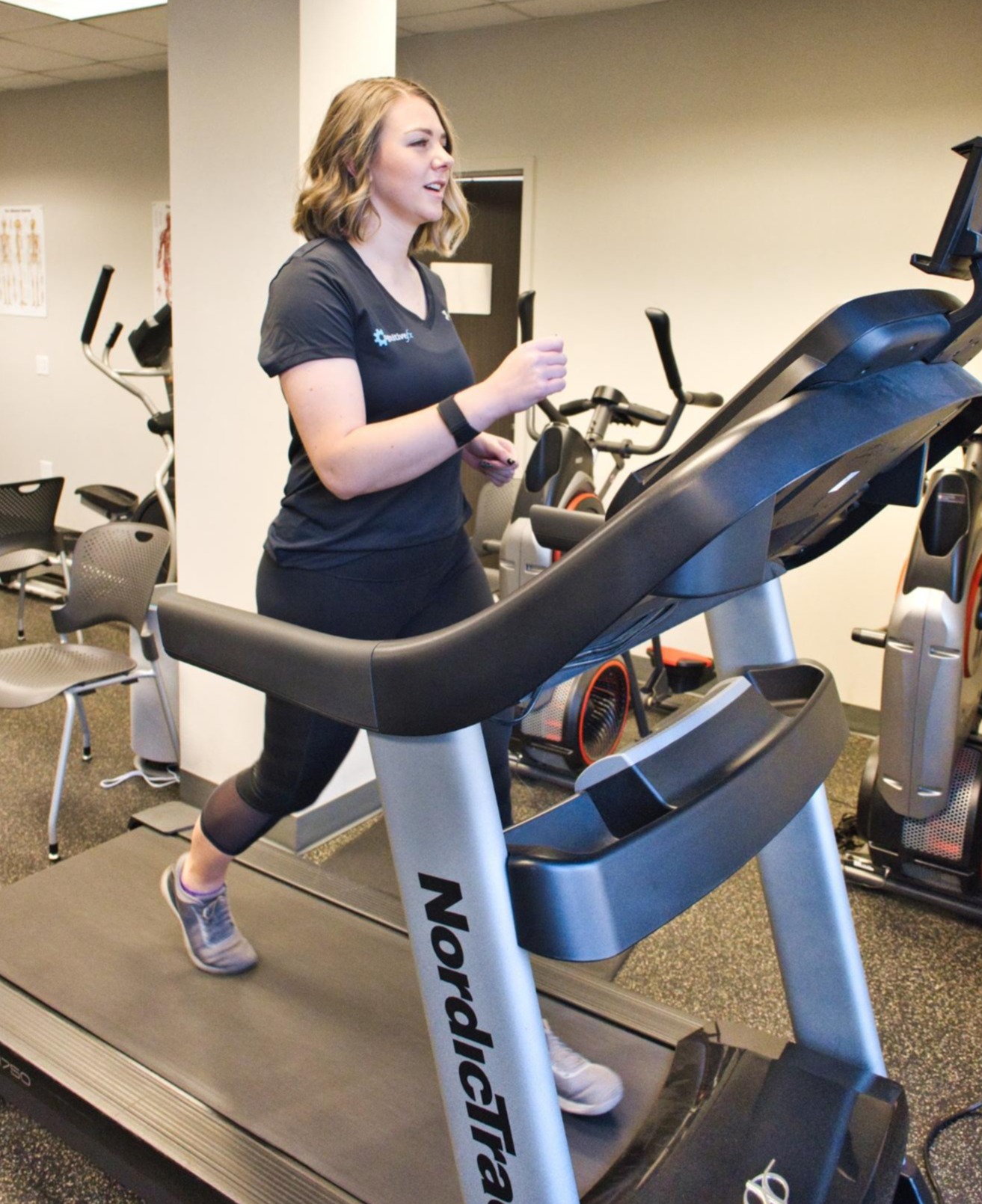
Prepare
Treatment starts with short sessions of aerobic exercise, typically on a stationary bike or treadmill. The aim is to promote blood flow within the brain and trigger the release of many helpful neurochemicals, including the compound brain-derived neurotrophic factor (BDNF). BDNF helps the brain learn new information boosting the efficacy of subsequent therapies.
.jpg?width=1999&height=1500&name=TIA%20(6).jpg)
Activate
During the activate step, patients attend a variety of therapies. While patients receive most of the therapies we offer, the exact combination of exercises within each therapy varies considerably depending on the results of the brain scan.
|
Therapies Offered at Cognitive FX
At Cognitive FX, the primary purpose of each therapy is to stimulate healthier NVC in the brain regions identified as underperforming for each patient. Different therapies excel at helping different brain regions. All therapies are conducted in-house with close, daily communication between therapists to ensure they are fine-tuned for your needs.
|
|
Cognitive therapy
|
- The aim is to engage key brain regions and rehabilitate cognitive skills, such as memory, attention, decision-making, information processing, and reasoning.
- Patients engage in cognitive activities, such as solving logic puzzles and identifying word patterns.
|
|
Occupational therapy
|
- Patients engage in exercises that help the brain, body, and eyes coordinate with each other.
- Therapists help patients readjust to their daily activities by focusing on difficulties identified on their fNCI scan, including compensatory strategies for work and school as they recover.
|
|
Neuromuscular therapy
|
- The aim is to relieve headaches and neck pain, rehabilitate balance, improve body-brain coordination, and promote physical activity.
- Patients receive massages, stretches, and soft tissue manipulation to increase blood flow.
- Patients also engage in cognitive games and physical therapy exercises.
|
|
Sensorimotor therapy
|
- The aim is to improve cognitive and physical skills and reduce symptoms of depression.
- Patients follow simple movement patterns in time with a metronome to address cognitive, visual, and vestibular symptoms.
|
|
Vision therapy
|
- The aim is to address vision problems, such as blurred vision, difficulty focusing, and light sensitivity.
- Patients engage in different exercises, including Dynavision, visual tracking exercises, the Brock String, and other computerized technologies.
- If patients need further therapy after treatment, our therapists can help find a suitable neuro-optometric rehabilitation program.
|
|
Neurointegration therapy (vestibular therapy)
|
- The aim is to help with various vestibular issues, including poor posture, dizziness, and vertigo. Vision exercises are often incorporated as well.
- Patients engage in gaze stabilization and balance exercises. For example, patients catch a ball while standing on a balance board or walk in a figure eight pattern while keeping their eyes focused on a point.
|
|
Psychotherapy
|
- Patients meet with a clinical psychologist to evaluate their mental health status.
- For patients suffering from depression and anxiety, our therapists recommend cognitive behavioral therapy (CBT). We do not offer this type of therapy but can refer them to a specialist.
- Patients learn mindfulness exercises and other relaxation strategies.
|
Note: While care for pediatric post-concussion syndrome patients is similar to that for adults, we tailor our approach based on age.
For further information, see our post on post-concussion syndrome in children.
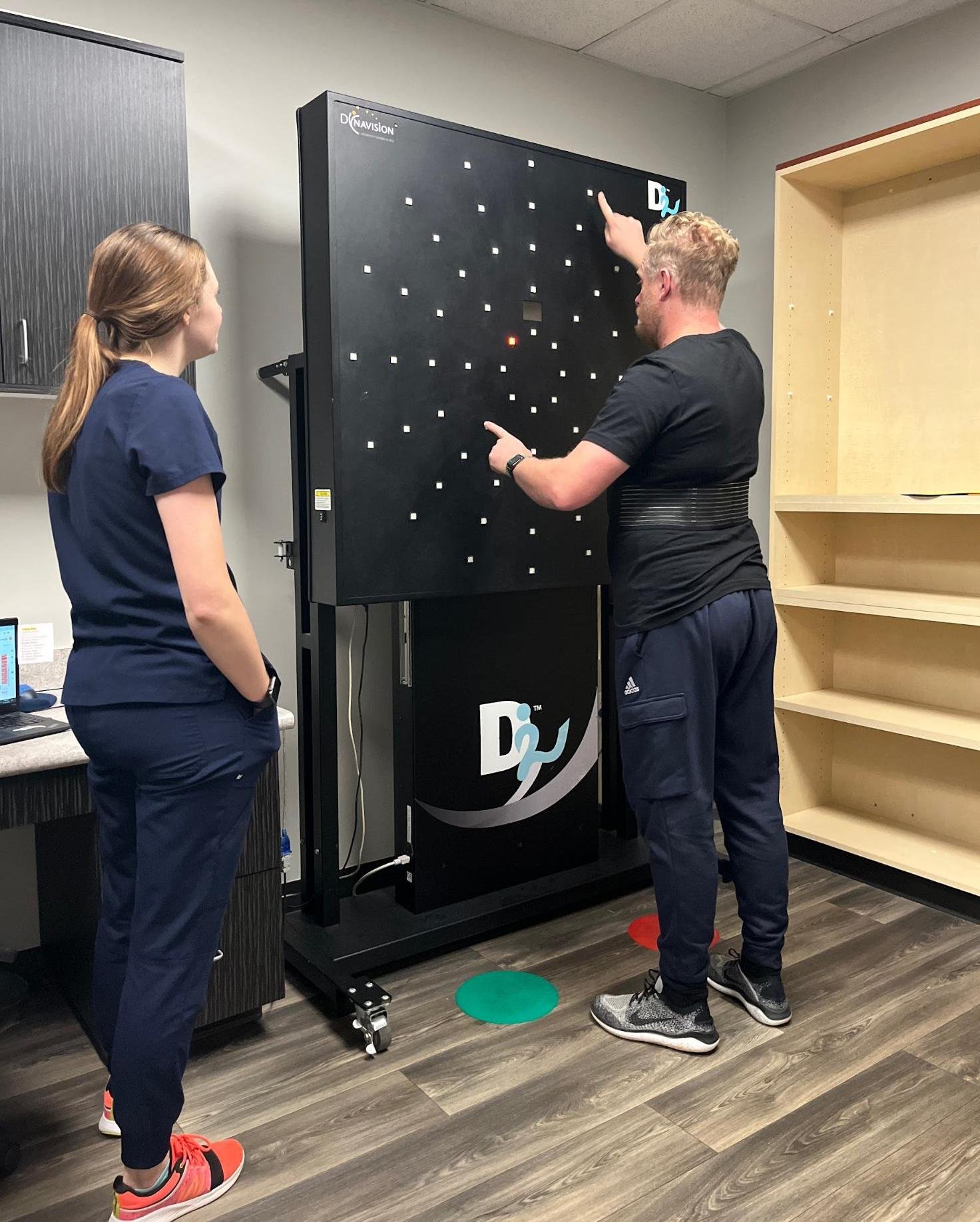 Patient Scotty Allen (from the Strange Parts YouTube channel) tries Dynavision therapy.
Patient Scotty Allen (from the Strange Parts YouTube channel) tries Dynavision therapy.
Rest
The third step involves periods of rest in between therapy sessions. Patients learn a variety of breathing and mindfulness exercises, listen to brainwaves, or receive a neuromuscular massage of the neck and shoulders.
At the end of treatment, patients complete a second fNCI scan to see how their brain is responding to therapy. Finally, patients meet with one of our therapists to discuss their progress and how to continue recovery at home.
Patients receive a series of at-home exercises, typically including aerobic exercises, cognitive games, and relaxation techniques. Ideally, we recommend engaging in these exercises for about one hour every day, five days a week. When patients start to feel better, they can gradually do these exercises less often. If needed, we also provide referrals to additional specialists, such as endocrinologists, psychologists, and vision therapists.
Key Differences
UC San Diego Health
- UC San Diego offers a variety of options for treating concussions, but their emphasis seems to be on patients with a recent head injury.
- UC San Diego doesn’t appear to have an organized treatment program for post-concussion syndrome.
- Patients will be directed toward different doctors and therapists according to their symptoms, but there is no guaranteed coordination between healthcare professionals.
Cognitive FX
- We offer a combination of aerobic exercise and multidisciplinary therapies backed by years of research. Therapies offered include cognitive therapy, vision and vestibular (neurointegration) therapy, sensorimotor therapy, neuromuscular and physical therapy, occupational therapy, psychotherapy, and more.
- Therapies are tailored for each patient to address the issues causing PCS symptoms. This is based on results from the fNCI brain scan.
- Patients engage in different exercises targeting multiple symptoms at the same time to maximize recovery. For example, patients may be asked to balance on a Bosu ball (vestibular therapy) and recite the names of animals alphabetically (cognitive therapy) while catching a ball (vision/physical therapy).
- Our team is in constant communication regarding patients’ progress and how to adjust the difficulty levels and type of therapy they receive.
- We also offer patient support after treatment, including exercises to continue recovery at home.
Pricing and Insurance
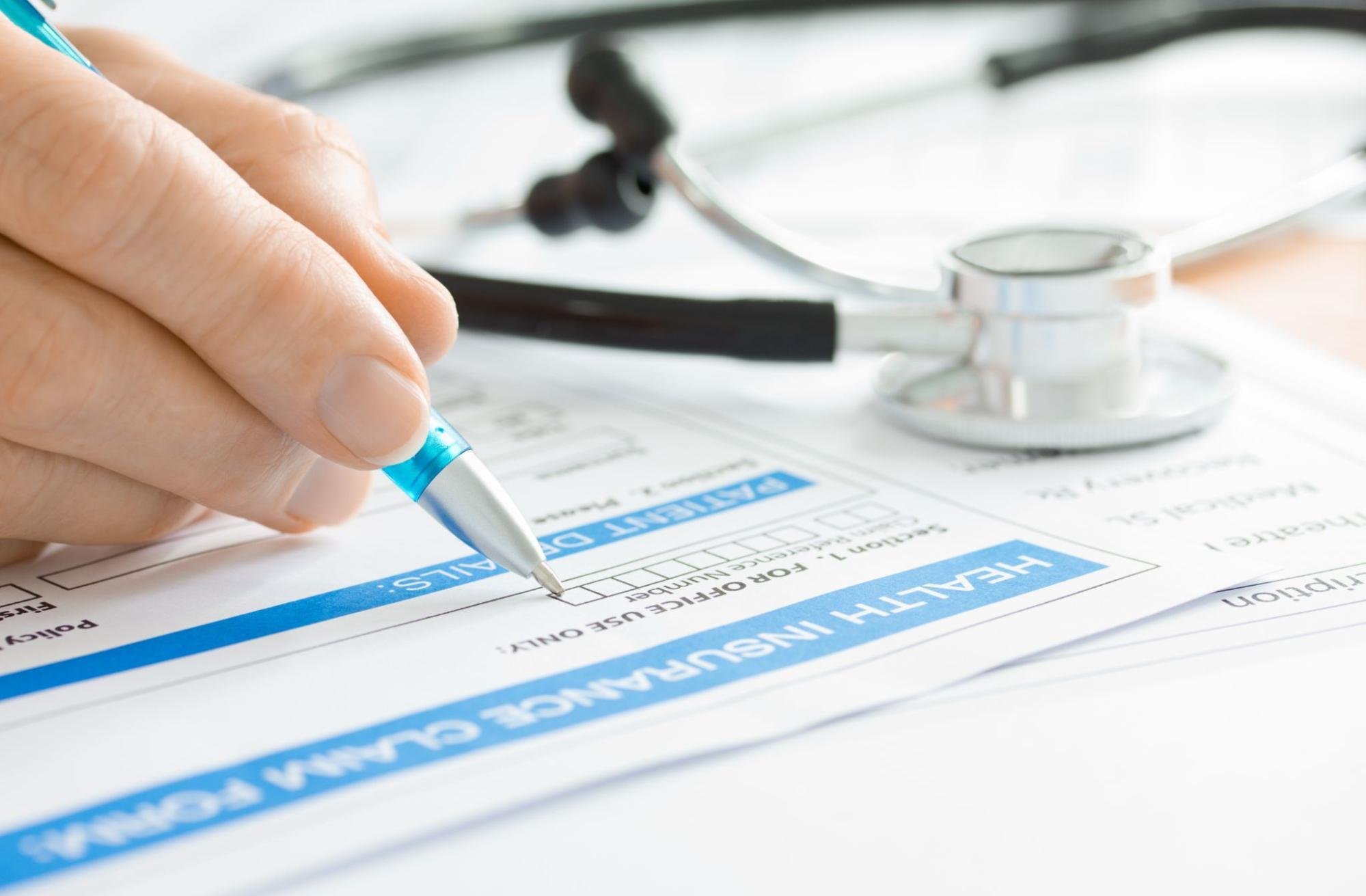
UCSD Provides Cost Estimates for Treatment and Accepts a Variety of Insurance Plans
Patients at UC San Diego Health receive an estimated cost for their treatment. It’s important to note that this is not a guarantee and the final bill may be different. UC San Diego Health accepts various plans from different insurance companies; lists can be reviewed here. Some patients may also be able to claim financial assistance to help with treatment costs.
Cognitive FX Offers Four Fixed Pricing Packages and Can Provide Codes to Obtain Partial Reimbursement From Insurance Companies
Cognitive FX is not an in-network provider with any insurance providers, but we can provide CPT codes (see the full list on our pricing page), and some of our patients may obtain partial reimbursement from their insurance companies.
Our treatment is costly but priced fairly for the services we offer. No other clinic in the world — including UCSD’s concussion clinic — has assembled a medical team as extensive as ours nor do they offer the same level of targeted treatment, thanks to the fNCI results.
We offer four packages for patients to choose from, ranging from $2,500 to $24,700. If patients choose one of the packages with just the brain scan — “fNCI only” or the “fNCI + Action plan” — but then decide to continue treatment with us, the initial cost is credited to the cost of treatment. For example, if you choose the fNCI scan only but then decide to attend one week of treatment, your treatment plan cost would be $10,500 ($13,000 less the $2,500 you already paid for the scan).
If you need help choosing the right treatment plan, a member of our team would be happy to discuss options with you.
.jpg?width=1472&height=1999&name=Comparing%20Treatment%20Plans%20at%20Cognitive%20FX%20(2024).jpg)
Overall Comparison
Patient Evaluation
Patient evaluation at UC San Diego Health relies heavily on the results of the ImPACT computerized assessment, typically done after a sports-related head injury. This exam is good at detecting whether patients have suffered a concussion (especially if compared to baseline results), but it cannot identify what areas of the brain were affected. To do this, the team at UCSD also uses brain imaging MEG, but this technique isn’t fully reliable and does not always produce accurate results.
In contrast, the brain imaging technique we use at CFX — called fNCI — can identify the exact areas affected by the concussion. Our therapists use the results from the scan to design a customized treatment for each patient, addressing their specific symptoms.
Treatments Offered
UC San Diego Health primarily focuses on treating acute sports-related concussions (although they can also treat non-sports concussions). Most patients receive treatment at the neurological rehabilitation center, typically via different therapies, such as physical and occupational therapy; as well as alternative treatments, such as acupuncture and massage. However, patients are directed to different doctors according to their symptoms. In effect, each therapy is offered in isolation by different therapists. Also, these appointments are likely to be spread over time, which may delay recovery.
In addition, they also lack a dedicated department for treating persistent post-concussion symptoms, making it less suitable for individuals suffering from long-term effects of brain injuries.
At Cognitive FX, we know the key to treating PCS patients is integration between therapies. Our team members are close collaborators who constantly communicate with each other to monitor patients and adjust treatment as needed. Our comprehensive treatment includes addressing neurovascular coupling dysfunction (identified by the brain imaging scan), autonomic nervous system issues, and other chronic symptoms. Patients follow an intensive treatment plan for one or two weeks, attending multiple therapy sessions each day. Over 90 percent of Cognitive FX patients experience improvements in symptoms by the end of their first week of treatment, and the average symptom improvement is over 60 percent.
To see if you’re a good fit for our program, sign up for a consultation.
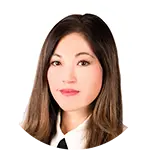
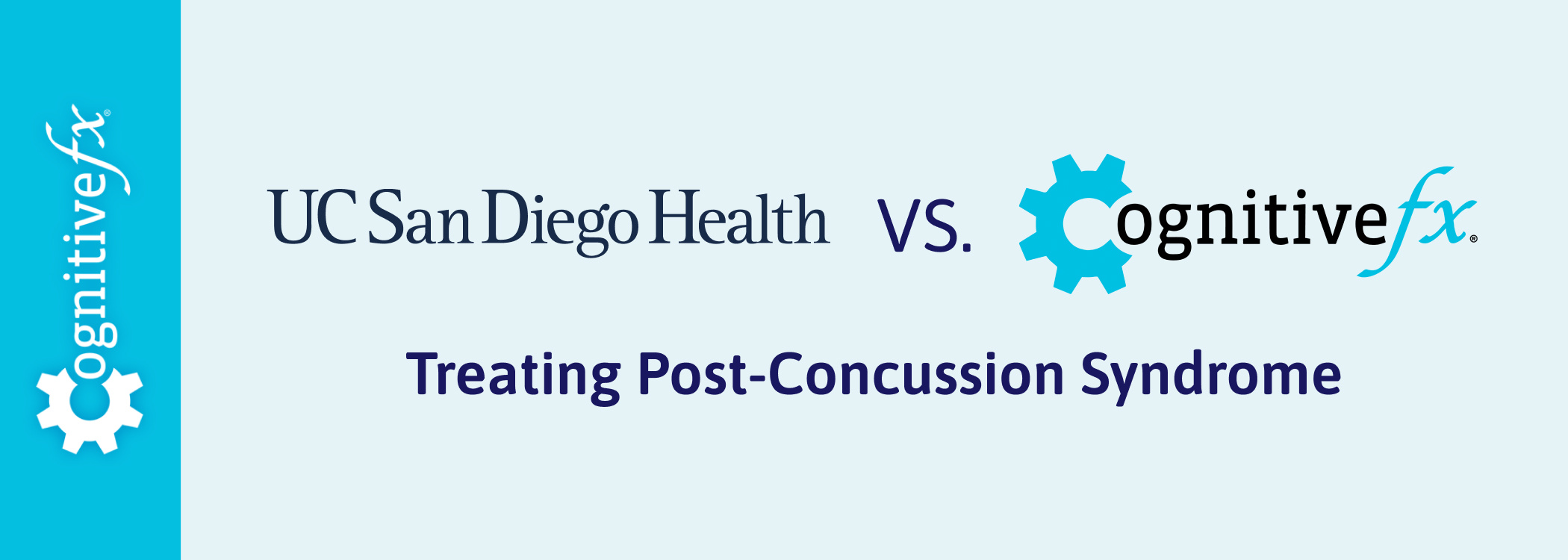





%20(3)-1.jpg?width=676&height=313&name=Yes%2c%20COVID%20Affects%20the%20Nervous%20System%20(%26%20What%20to%20Do%20About%20It)%20(3)-1.jpg)


.jpg?width=1999&height=1500&name=TIA%20(6).jpg)


.jpg?width=1472&height=1999&name=Comparing%20Treatment%20Plans%20at%20Cognitive%20FX%20(2024).jpg)



